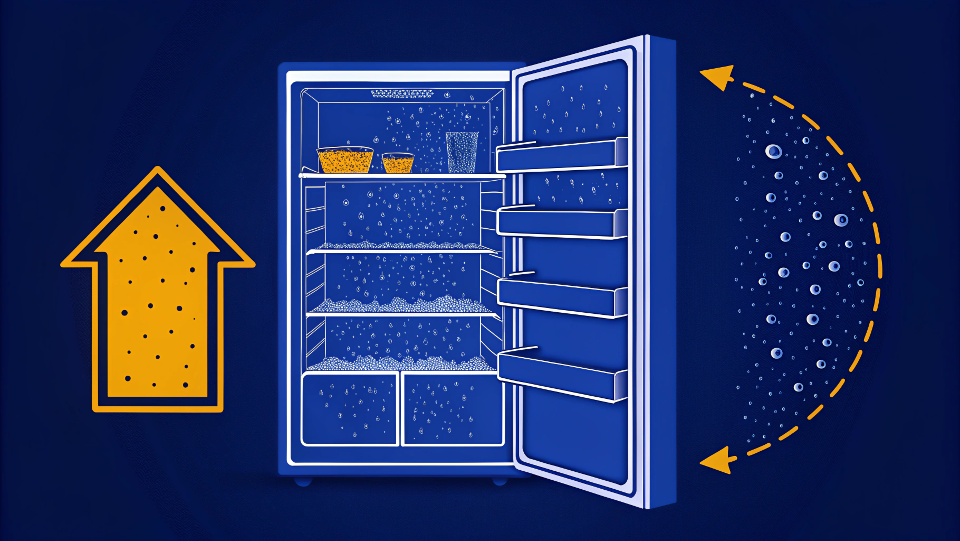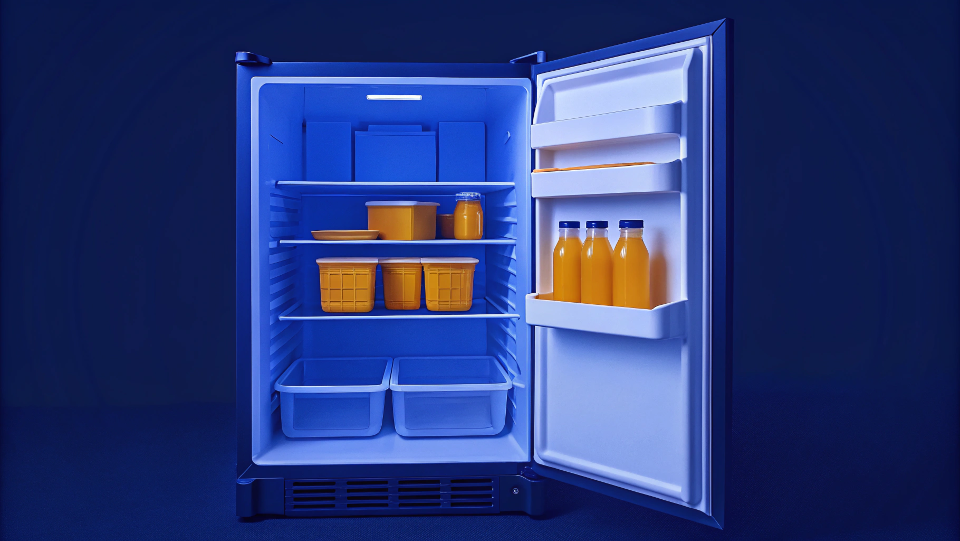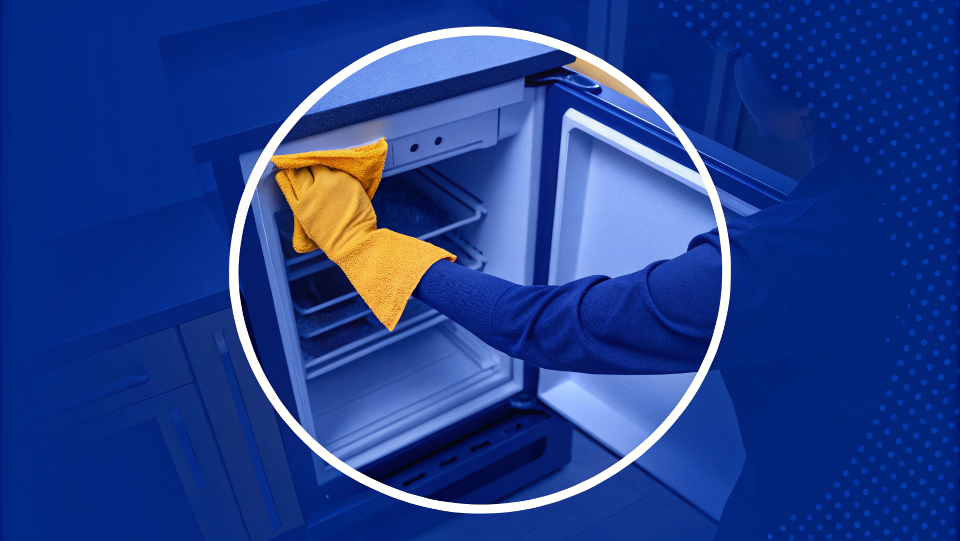Are you grossed out by the black gunk on your refrigerator seal? This mold is ugly and unhealthy, and it can stop your fridge from sealing properly, wasting energy.
To clean mold from your refrigerator door seal, mix equal parts white vinegar and water. Apply this solution with a soft cloth or toothbrush, scrubbing gently to lift the mold. Wipe the area with a clean, damp cloth, and be sure to dry it completely.
That simple cleaning process will get rid of the visible mold. But do you know what caused it to grow there in the first place? If you don't tackle the root cause, you will find yourself scrubbing it away again and again. Understanding why it appears is the key to preventing it from ever coming back. Let’s dive into what makes your fridge seal a perfect home for mold.
Why does mold grow on refrigerator door seals?
You clean the mold off the seal, but it just keeps coming back. It feels like a constant battle you can't win, and you're tired of the repeated effort.
Mold grows on refrigerator seals because of moisture from condensation, food particles for nutrients, and a dark, undisturbed environment. This combination creates the perfect breeding ground for mold spores, especially in the seal's tight crevices, letting them grow and spread.

In my years running a refrigerator factory, I've seen thousands of fridge seals. The best ones are designed to keep mold away, but even they can have issues if not cared for. Mold needs three things to grow, and a fridge seal can provide them all.
The Three Ingredients for Mold Growth
First, mold needs moisture. Your kitchen has warm, humid air. When you open the fridge, this warm air hits the cold surfaces, including the door seal. This creates condensation, which is just little water droplets. A door seal that is old, damaged, or doesn't close tightly makes this problem worse. It lets a constant stream of warm air in, creating even more moisture for mold to drink.
Second, mold needs a food source. Think about all the tiny spills and crumbs that happen in a kitchen. A drop of juice, a sticky fingerprint, or a small crumb can get trapped in the folds of the seal. For mold, this is a feast. I once advised a client, Alex, who was developing his own brand of retro refrigerators. He was focused on the look, but I told him that the material and shape of the seal were just as important to make cleaning easy and prevent food from getting trapped.
Finally, mold loves a dark, sheltered environment. The folds and grooves of the gasket are perfect. They are dark, protected from light, and often missed during a quick wipe-down of the fridge. This gives mold spores a safe place to land and grow without being disturbed.
| Factor | The Cause | How to Prevent It |
|---|---|---|
| Moisture | Warm air causes condensation on the cold seal. | Wipe the seal dry weekly and check that the door closes tightly. |
| Food Source | Tiny spills, crumbs, and sticky residue get trapped. | Clean up spills right away and make the seal part of your cleaning routine. |
| Environment | The dark, hidden folds of the seal offer protection. | Open the seal's folds and clean inside them regularly. |
Is it safe to use a fridge after mold?
You've found mold on your fridge seal, and now a wave of worry hits you. Is all the food inside contaminated? Is it still safe for you and your family?
Yes, it is generally safe to use your fridge after you have thoroughly cleaned the mold from the seal. As long as the mold has not touched the food inside, cleaning removes the risk. You should, however, throw away any food that shows signs of mold.

This is a very common concern. Safety should always come first, especially when it comes to your family's food. The good news is that if the mold is only on the rubber seal, you can fix the problem. The seal is a non-porous surface, which means the mold is just sitting on top. It hasn't grown deep into the material, so you can clean it off completely. The main danger is that mold spores could get onto the food, but a proper cleaning protocol will handle this.
Your Safety Checklist After Finding Mold
When you find mold, you need to act. Don't just wipe the seal and close the door. Follow these steps to make sure your fridge is truly safe and clean.
1. Inspect and Remove Food
First, take all the food out of the refrigerator. Look at everything carefully. You must throw away any food that has visible mold on it. Be extra cautious with soft or porous items like bread, cheese, and leftovers. Spores can easily travel through these foods even if you can't see them. When in doubt, throw it out. It is better to be safe.
2. Choose Your Cleaner and Deep Clean
Next, you need to clean the entire fridge, not just the seal. You have a few options for cleaning solutions.
| Cleaning Solution | How to Make | Pros & Cons |
|---|---|---|
| White Vinegar | Mix 1 part vinegar with 1 part water. | Pro: Food-safe, kills most mold species. Con: Strong smell. |
| Baking Soda Paste | Mix baking soda with a little water to form a paste. | Pro: Gentle abrasive, good for scrubbing. Con: Less disinfecting power. |
| Mild Bleach Solution | Mix 1 tbsp bleach with 1 gallon of water. | Pro: Very strong disinfectant. Con: Harsh chemical, must rinse very well. |
I usually recommend starting with vinegar because it's effective and safe. Use a cloth or sponge to wash the inside walls, shelves, and drawers. Pay special attention to corners and crevices where spores might hide. After washing, rinse every surface with a clean cloth and plain water to remove any cleaning solution residue.
3. Dry and Air Out
Finally, dry the entire interior with a clean towel. Don't leave any moisture behind. To be extra sure, leave the refrigerator door open for at least 30 minutes to let it air out completely. This ensures everything is perfectly dry before you put the food back in.
Conclusion
Regularly cleaning your fridge seal prevents mold. A simple vinegar solution works wonders and keeps your appliance safe and efficient. This small habit protects your food and your family.

